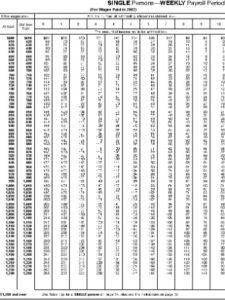Accounts receivable days definition
Content
Note that the interest component decreases for each of the scenarios even though the total cash repaid is $5,000 in each case. In scenario 1, the principal is not reduced until maturity and interest would accrue over the full five years of the note. For scenario 2, the principal is being reduced on an annual basis, but the payment is not made until the end of each year. For scenario 3, there is an immediate reduction of principal due to the first payment of $1,000 upon issuance of the note. The remaining four payments are made at the beginning instead of at the end of each year. This results in a reduction in the principal amount owing upon which the interest is calculated.
The receivables are pledged as security for the loan, but the control and collection often remain with the company, so the receivables are left on the company’s books. The company records the proceeds of the loan received from the finance company as a liability with the loan interest and any other finance charges recorded as expenses. If a company defaults on its loan, the finance company can seize the secured receivables and directly collect the cash from the receivables as payment against the defaulted loan. Just as was the case with accounts receivable, there is a possibility that the holder of the note receivable will not be able to collect some or all of the amounts owing. When the investment in a note receivable becomes impaired for any reason, the receivable is re-measured at the present value of the currently expected cash flows at the loan’s original effective interest rate. Even though the interest rate is not stated, the implied interest rate can be derived because the cash values lent and received are both known.
What are Accounts Payable?
For example, let’s say the company’s note maturity date was 12 months instead of 24 (payment in full occurs December 31, 2018). Notes receivable have several defining characteristics that include principal, length of contract terms, and interest. The principal of a note is the initial loan amount, not including interest, requested by the customer. If a customer approaches a lender, requesting $2,000, this amount is the principal. The date on which the security agreement is initially established is the issue date.
- When interest is due at the end of the note (24 months), the company may record the collection of the loan principal and the accumulated interest.
- Usually, trade receivables refer to money due from customers for goods and services delivered or used.
- Any payments made after the discount period are simply the cash amount collected and no calculation for the sales discounts forfeited is required.
- The bottom line is that receivables management is about finding the right level of receivables to maintain when implementing the company’s credit policies.
- If the account is not paid according to the terms of the agreement, the company begins a collections process.
Under ASPE, if all three conditions for treatment as a sale as described previously are met, the transaction can be treated as a sale. Factors typically charge a 2% to 3% fee when they buy the right to collect payments from customers. A 2% discount for an invoice due in thirty days is the equivalent of a substantial 25% a year, and 3% is over 36% per year compared to the much lower interest rates charged by banks and finance companies.
Do You Want a Higher or Lower Accounts Receivable Turnover?
The debt ratio worsens to 36% if the transaction does not meet the criteria for a sale and is treated as a secured borrowing. This impact could motivate managers to choose a sale for their receivables to shorten the credit-to-cash cycle, rather than the https://kelleysbookkeeping.com/ borrowing alternative. Derecognition is the removal of a previously recognized receivable from the company’s balance sheet. In the normal course of business, receivables arise from credit sales and, once paid, are removed (derecognized) from the books.

Therefore, the supplier sent the customer, i.e. the manufacturer, an invoice for the amount owed, which we’ll assume to be $50k. However, circumstances change abruptly and management has to evaluate this question carefully before What Are Other Receivables? Meaning, Formula, And Example any disclosure is made. There are very outside chances that other receivables will become significant. The large listed companies generally go by the heading “Trade receivables and Other” where Other receivables are incorporated.
How to Record Accounts Receivable
It’s smart to know how to calculate your collection period, understand what it means, and how to assess the data so you can improve accounts receivable efficiency. Although this example focused mainly on accounts payable, you can also do this with accounts receivables as well and we can demonstrate that with this next example. Make sure the same period is being used for both net credit sales and average receivables by pulling the numbers from the same balance sheets.

The longer it takes for a company to get paid, the more trade receivable days it will have. Trade receivables is a term used to describe the money owed by one company to another. In this article, we will discuss what trade receivables are, how important they are for business owners, and what you can do to reduce your company’s trade receivables. To create a workflow for accounts receivable, a business must generate and send a bill to the customer. Depending on whether the client makes a timely payment, the company may apply discounts or fees as applicable.


Leave a Reply
Want to join the discussion?Feel free to contribute!